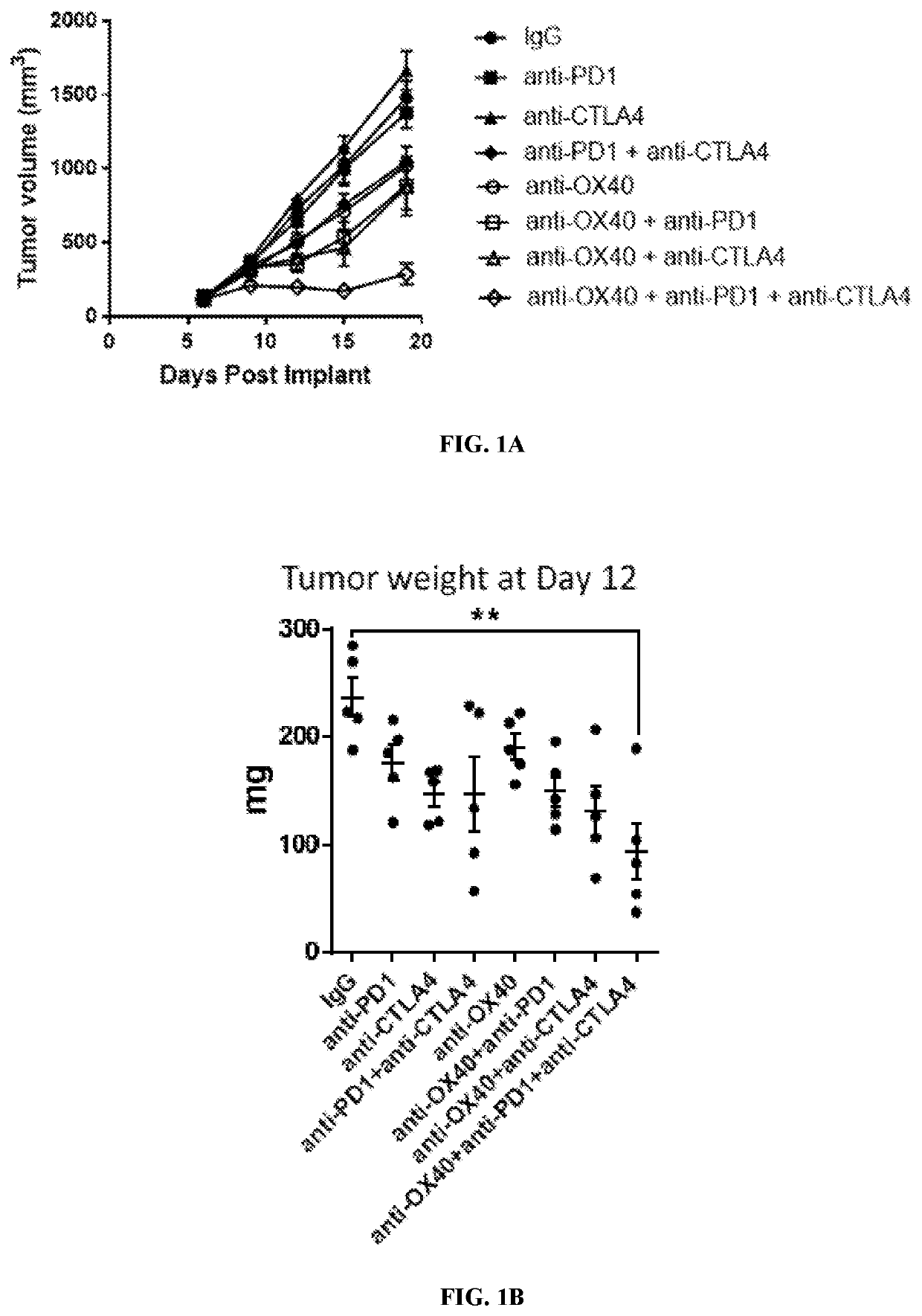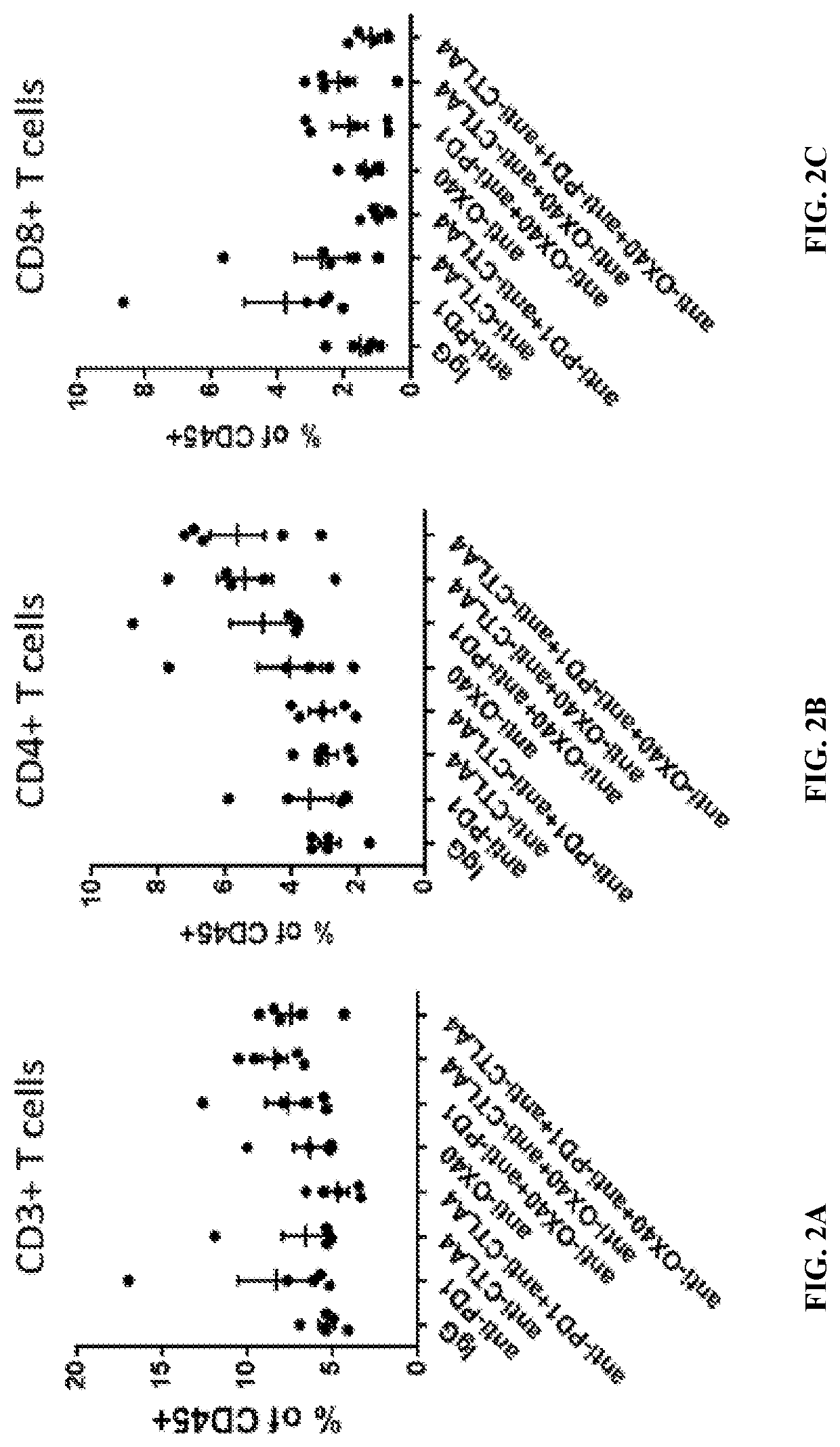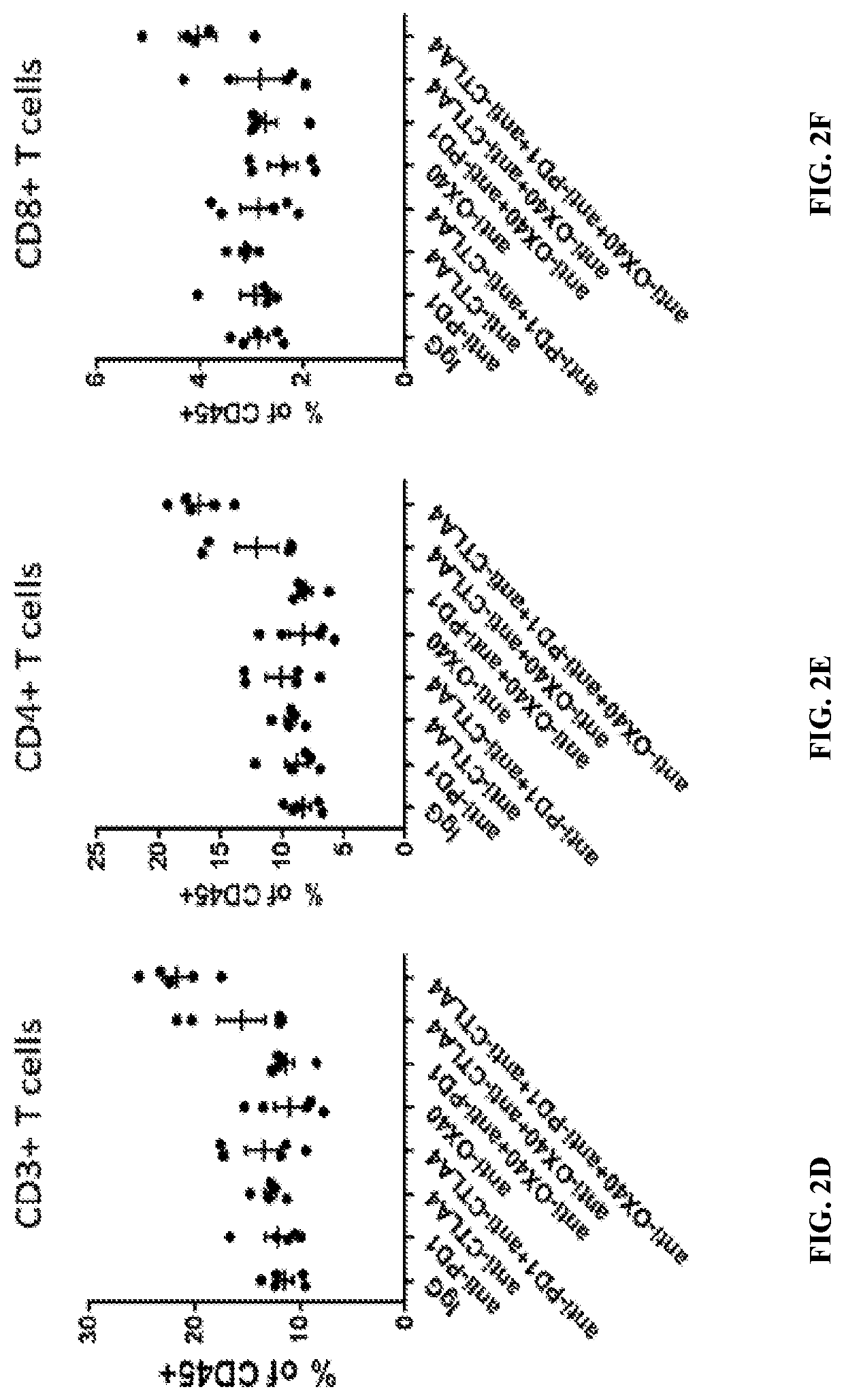Ox-40 agonist, pd-1 pathway inhibitor and ctla-4 inhibitor combination for use in a method of treating a cancer or a solid tumor
a cancer or solid tumor, pd1 pathway technology, applied in the direction of instruments, drug compositions, peptides, etc., can solve the problems of burdensome administration of multiple antibodies, not all combinations have acceptable safety and/or efficacy, etc., to reduce the presence of granulocytic myeloid-derived suppressor cells, reduce the presence of exhausted effector cd4+ t cells, and reduce the effect of reducing the presence of granulocytic myeloid-derived
- Summary
- Abstract
- Description
- Claims
- Application Information
AI Technical Summary
Benefits of technology
Problems solved by technology
Method used
Image
Examples
example 1
Analysis of the Pharmacodynamic Effects of ANti-OX40 Antibody Combined with Anti-PD-1 and Anti-CTLA-4 Antibodies in 4T1 Tumor Model
[0212]To evaluate the pharmacodynamics effects of the combination treatment, a 4T1 tumor model for human breast cancer was used. Briefly, female BALB / c mice (7-9 weeks old, Harlan Laboratories, Frederick, Md.) were subcutaneously implanted with 1×106 4T1 cells (American Type Culture Collection) in 0.2 mL PBS using a 1-cm syringe and a 27-gauge half-inch needle. Six days after implantation, tumors were measured with calipers two-dimensionally and tumor volume was calculated using the formula: L×(W2 / 2), L=length (the longer of the two measurements), W=width. Mice were then randomized into 8 groups (n=5), with each group having a mean tumor volume of approximately 100 mm3. Starting at day 6 post-implantation, each mouse was dosed twice, four days apart (Q4Dx2) (i.e., at day 6 and at day 10 post-implantation) intraperitoneally with anti-OX40 antibody (3 mg / k...
example 2
Analysis of the Antitumor Efficacy of Anti-OX40 Antibody Combined with Anti-PD-1 and Anti-CTLA-4 Antibodies in 4T1 Tumor Model
[0226]To study the effect of the triple combination therapy on tumor growth, a 4T1 tumor model was again used as described in Example 1. After tumor implantation, mice were randomized into 16 groups (n=10), with each group having a mean tumor volume of approximately 100 mm3. Starting at day 6 post-implantation, mice were then dosed four times, four days apart between each dose, (Q4D ×4) (i.e., days 6, 10, 14, and 18 post-implantation) with anti-OX40 antibody, anti-PD-1 antibody, anti-CTLA-4 antibody, or isotype control antibody, alone or in combination, as shown in Table 7.
TABLE 7Study DesignGroupDoseDoseNo.Treatment(mg / kg)ScheduleRoute 1IgG1 isotype20Q4D × 4IPIgG2b isotype10 2Anti-PD-110Q4D × 4IPIgG1 isotype10IgG2b isotype10 3Anti-CTLA-410Q4D × 4IPIgG1 isotype20 4Anti-PD-110Q4D × 4IPAnti-CTLA-410IgG1 isotype10 5Anti-OX4010Q4D × 4IPIgG1 isotype10IgG2b isotype...
PUM
| Property | Measurement | Unit |
|---|---|---|
| volume | aaaaa | aaaaa |
| weight | aaaaa | aaaaa |
| volume | aaaaa | aaaaa |
Abstract
Description
Claims
Application Information
 Login to View More
Login to View More - R&D
- Intellectual Property
- Life Sciences
- Materials
- Tech Scout
- Unparalleled Data Quality
- Higher Quality Content
- 60% Fewer Hallucinations
Browse by: Latest US Patents, China's latest patents, Technical Efficacy Thesaurus, Application Domain, Technology Topic, Popular Technical Reports.
© 2025 PatSnap. All rights reserved.Legal|Privacy policy|Modern Slavery Act Transparency Statement|Sitemap|About US| Contact US: help@patsnap.com



